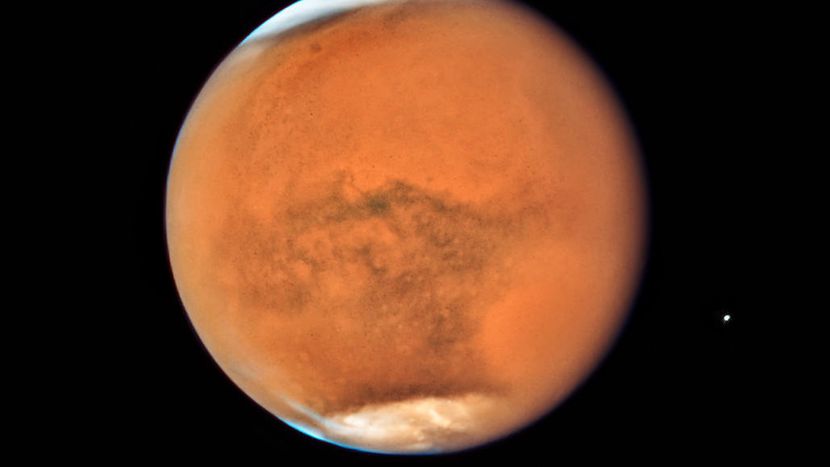When a star like the Sun ages, it begins to swell until it becomes a red giant. When it reaches the end of its life, the star finally expels its outer layers of gas, leaving behind a dense nucleus. You then get a star corpse, called “white dwarf”. This is how our Sun will end in about 10 billion years.
White dwarfs, astronomers have observed thousands. Some even sport a disc of debris around them. But never had a giant planet been spotted in the immediate vicinity of these stellar corpses. We owe this amazing discovery to Boris Gänsicke from the University of Warwick in the UK.
A special relationship
By observing about 7,000 of these objects, the astronomer explains indeed having spotted one whose chemical signatures seemed unusual. Follow-up studies enabled by ESO’s Very Large Telescope then confirmed the presence of hydrogen, oxygen and sulfur in the debris disk.
After analysis, the researchers then deduced the presence of a giant Neptune-like planet, evolving so close to its star – about 10 million kilometers away – that it is siphoned off the material. These evaporated gases then leave distinct chemical traces around the white dwarf.
The researchers estimated that there were about 3,000 tons of material torn off the planet. But she should hold on.
Indeed, white dwarfs do not have an internal mechanism capable of generating energy like the Sun. In other words, the star will gradually cool down. In about 350 million years, it will be cold enough to no longer affect the planet. The researchers estimate that at this stage, it will have lost only 4% of its mass.
This discovery is also interesting in that it shows us what could happen to our star in billions of years.
When it turns into a red giant, the Sun should normally engulf Mercury, Venus, Earth and Mars. But the outer planets will be spared. It is then possible that one of them ends up being attracted to the interior, eventually having a special relationship with his body.


